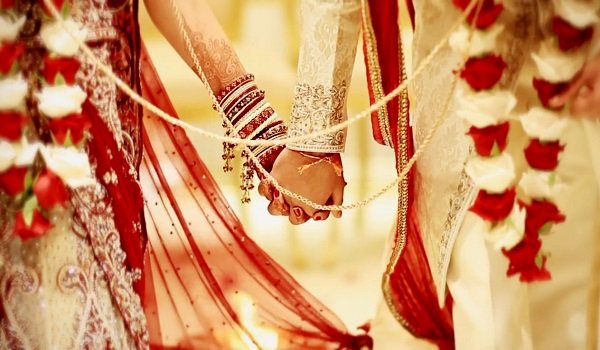Why Marry instead of Living-in?


Marriage in our Hindu Sabhyata has been considered the foundation of Samaj or society. For Hindus, marriage is a Sanskar, one of the 16 to be done in one’s lifetime; marriage is not a breakable contract between two people. For Hindus marriage can be conducted anywhere – in a Temple, at home, in a hall, anywhere, in the presence of the Priest, Agni (Homa and/or Deepa), the Panch Tattva, Samaj (society) and of course, the all-pervading Bhagawan. There are also the rare marriage rituals where only the Panch Tattva and Bhagawan are present.
Irrespective of how the rituals are conducted, one thing is sure – the Hindu society gives acceptance to a couple living together only if their ‘vivaah’ has taken place. It is not as if a blood thirsty mob will attack two adults living in together, but by and large, living in together or having a child out of the wedlock is frowned upon. Youngsters today question this and ask why it is necessary to get married at all? They quote ‘modern’ times to state that ‘happiness’ is paramount and for two people to be happy, marriage is not essential. Another main conflict in most families today is Inter-religious marriages. Children state often that when both consenting parties are adults, then the family elders should not interfere and should only give their blessings, especially since the parent’s consent doesn’t matter by law.
As per our Hindu Sabhyata, Dharma, Artha, Kama and Moksha are the four goals of a human life. Dharma is our identity, our duty, it is that which sustains us spiritually. Artha is wealth, income, that which sustains us materially. Kama is our material and physical desires, that which keeps us bound to this life physically. Moksha is that spiritual goal which sets us free from all our bonds – spiritual, physical, material, mental and helps us attain union with Bhagawan.
Now, if one were to look closely at the above, one would realise that attaining any of the above goals is possible either by staying as an unattached individual or by striving for them with a partner. But who is that partner who could help us attain the above? Could it be your sibling? Could it be your parent? Could it be your friend? If one were to sit and contemplate, one would realise that all four goals are achievable only if one were to aim for it with one’s life partner ie. one’s spouse.
Imagine having the desire to purchase a big house. You could purchase it with your friend. Would you be able to call it your home if your friend started staying in it with his own family? Imagine wanting to do a Homa. Can you take your brother’s hand in your own and put the offerings into the Agni kund? Would you be able to get the same satisfaction of taking a dip in the Ganga or visiting a Teerth Kshetra with your live in girlfriend instead of a wife? Can you share all your bank account details with your live in boyfriend or even your brother and expect him to use the money for you and your home alone? When you die, will your live-in partner do the final rites year after year for you?
If you think that all of the above are only related to rituals, please contemplate once again. It is nothing to do with rituals alone. But it has everything to do with your being a spiritual entity and not just a physical entity, a mound of flesh. Humans, by nature are very complex beings and we have layers of physical, mental, spiritual and astral aura over us. When we think only of our physical self, we are shutting out the rest of our auras and are stunting our growth as spiritual beings. We cannot then come in touch with a higher self or entity at all. One may say that there are people who do not subscribe to societal norms and are still good human beings. One may also argue that married people are not necessarily on the path to Moksha. While both of these sentences are true, one cannot deny the fact that if one wants to look beyond this one lifetime, this body of ours, we have to tap into our spiritual being. Rituals, Temples, Teerth Kshetras, becoming detached to Artha and Kaama, following the path of Dharma, all help us tap into our higher self. And for that, either one should explore life with a spouse or one should become a Sanyasi. Temporary relationships cannot lead you on this path.
Here I would also like to present the view that there are many great souls which are waiting to take birth on our Earth, in Kalyug. But these souls will only be able to channelise themselves into a physical body via virtuous souls who are living the path of Dharma. When we ourselves do not want to live with noble goals in life, how can we bring into our lives such pure souls?
Om Shanti.
Note: Picture for representation purpose only, taken from the Internet
DISCLAIMER: The author is solely responsible for the views expressed in this article. The author carries the responsibility for citing and/or licensing of images utilized within the text.
